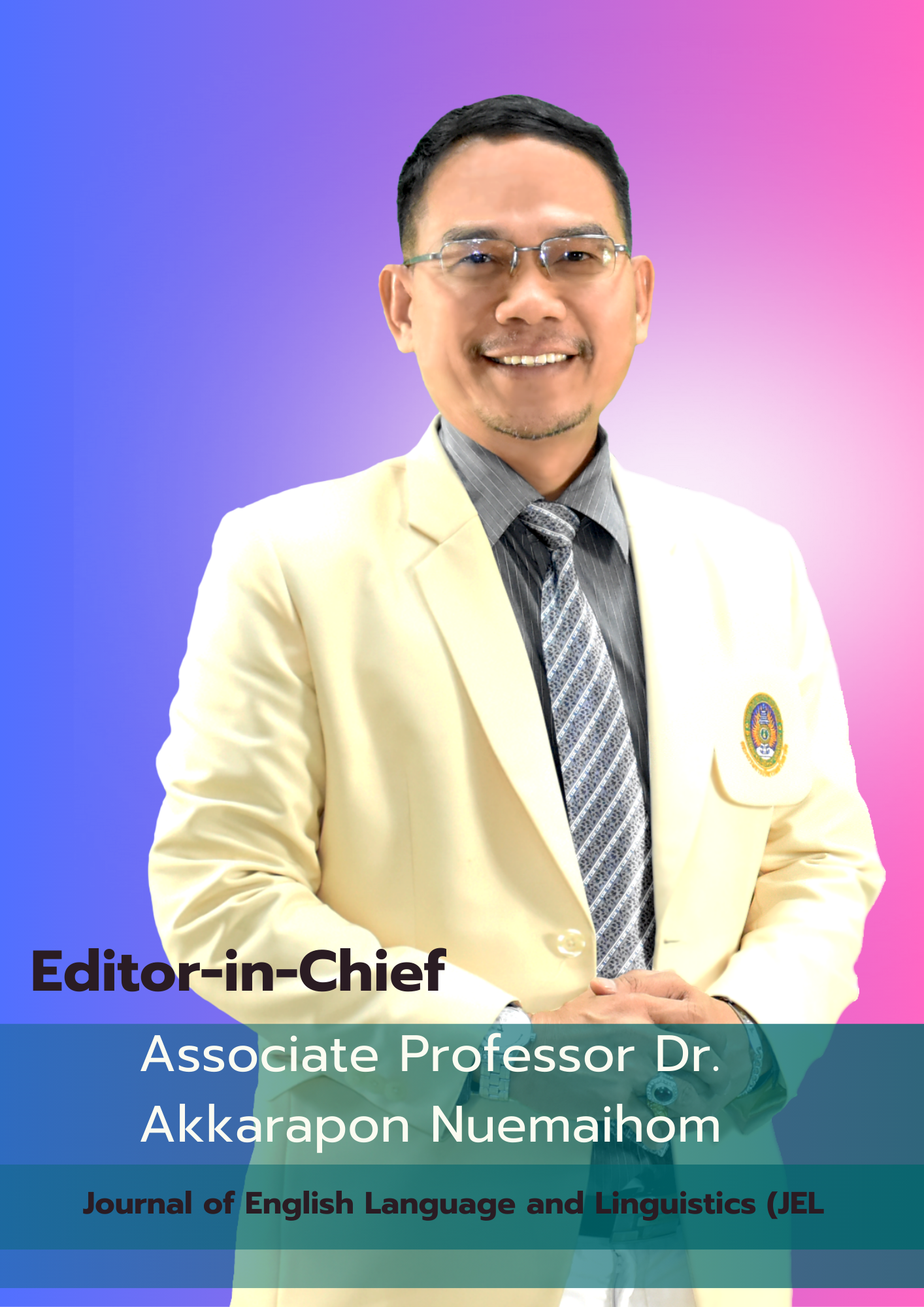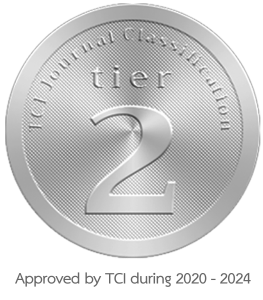The role of motivation in achieving English exit examination: A case study on Thai undergraduate nursing
DOI:
https://doi.org/10.62819/jel.2024.418Keywords:
CEFR B1 level, integrative motivation, instrumental motivations, TOEICAbstract
Motivation is believed to be one of the significant factors in English language achievement. It is a primary factor that encourages students’ behavior to achieve language goals. This study aimed to investigate the motivation of third-year Thai undergraduate nursing students in English language learning (ELL). A qualitative case study and semi-structured in-depth interview were employed. Only twenty-four out of 294 nursing students successfully passed the university requirement of the Common European Framework of Reference for Languages (CEFR) B1 level with Test of English for International Communication (TOEIC) scores higher than 380 in the second semester of the academic year 2566. The results indicated that the students who acquired CEFR B1 level had both integrative and instrumental motivations. The students believed English language ability to be a key factor in their nursing career. The students also spent their free time enjoying English music and movies. Furthermore, they wished to know more about English people and their culture. It is anticipated that the findings of this study will benefit nursing students, English teachers, and university administrators in creating activities, strategies, policies, and environments to increase the student’s motivation toward achieving English language goals.
References
Akbari, Z. (2015). Current challenges in teaching/learning English for EFL learners: The case ofjunior high school and high school. Procedia – Social and Behavioral Sciences, 199, 394–401. https://doi.org/10.1016/j.sbspro.2015.07.524
Alqahtani, N. (2022). English language usage and academic achievement among nursing students: A cross-sectional study. Sage Open Nursing, 8, 23779608221109364. https://doi.org/10.1177/23779608221109364
Anggoro, S. D. (2020). Assessing Thai nursing college students’ speaking ability through the perspectives of their Indonesian counterparts. VELES Voices of English Language Education Society. Voices of English Language Education Society, 4(1), 1-10. https://doi.org/10.29408/veles.v4i1.1894
Athiworakun, C., & Adunyarittigun, D. (2022). Investigating washback effects on teaching: A case study of an exit examination at the higher education level. LEARN Journal, 15(2), 776–800.
Banafi, N. (2023). Nursing students’ self-motivation, attitude toward communicative language teaching, and learning style preferences concerning medical English language skills. Theory and Practice in Language Studies, 13(5), 1287–1294. https://doi.org/10.17507/tpls.1305.24
Barr, P. S., Suddeepong, J., & Sricharean, S. (2024). A study of correlation between Englishspeaking ability and self-directed learning by blended-coach instruction in a foundation English course among Thai EFL undergraduate. Journal of Innovation and Management, 9(1), 135–149.
Bekele, W. B., & Ago, F. Y. (2022). Sample size for interview in qualitative research in socialscience: A guide to novice researchers. Research in Educational Policy and Management, 4(1), 42–50. https://doi.org/10.46303/repam.2022.3
Boonduaylan, S., Deoisres, W. , & Wacharasin, C. (2022). A causal model of job stress among Thai nurse-midwives. Frontiers of Nursing, 9(2), 215–223 . https://doi.org/10.2478/fon-2022-0016
Calafato, R. (2023). Charting the motivation, self-efficacy beliefs, language learning strategies, and achievement of multilingual university students learning Arabic as a foreign language. Asian-Pacific Journal of Second and Foreign Language Education, 8(1), 1–22. https://doi.org/10.1186/s40862-023 -00194-5
Chetsadanuwat, K. (2018). Needs of English skills of Thai nurses working in international hospitals accredited by JCI in Bangkok area. Language Education and Acquisition Research Network Journal, 11(1), 26–46.
Dörnyei, Z. (1990). Conceptualizing motivation in foreign language learning. Language Learning, 40(1), 45–78. https://doi.org/10.1111/j.1467 1770.1990.tb00954.x
Dörnyei, Z. (2001). Motivational strategies in the language classroom. Cambridge University Press.
Dörnyei, Z. (2003). Attitudes, orientations, and motivations in language learning: Advances in theory, research, and applications. In Z. Dörnyei (Ed.), Attitudes, orientations andmotivations in language learning (pp. 3–32). Blackwell Publishing.
Gardner, R. C. (1983). Learning another language: A true social psychological experiment. Journal of Language and Social Psychology, 2(2–3), 219–239. https://doi.org/10.1177/0261927X8300200209
Gardner, R. C. (1985). Social psychology and second language learning: The role of attitude and motivation. Edward Arnold.
Gardner, R. C. (2006). The socio-educational model of second language acquisition: A research paradigm. EUROSLA Yearbook, 6, 237 –260. https://doi.org/10.1075/eurosla.6.14gar
Gardner, R. C. (2007). Motivation and second language acquisition. University of Hawai’i Press.
Gardner, R. C., & Lambert, W. E. (1972). Attitudes and motivation in second language learning. Newbury House Publishers.
Gardner, R. C., & MacIntyre, P. D. (1991). An instrumental motivation in language study: Who say it isn’t effective?Studies in Second Language Acquisition, 13(1), 57–72. https://doi.org/10.1017/S0272263100009724
Gardner, R. C., & Masgoret, A. M. (2003). Attitude, motivation, and second language learning: A meta-analysis of studies conducted by Gardner and associate, 53(1) (pp. 167 –210). Language Learning Research Club.
Hoang, T. D., Phan, T. L., & Le, H. P. (2021). Non-English major students’ perceptions towards TOEIC online learning and testing. AsiaCALL Online Journal, 12(5), 114–128.
It -ngam, S., Saejew, B., & Kunprayoonsawat, R. (2023). The demands of employers and the English competency of the workforce in the eastern economic corridor of Thailand. LEARN Journal: Language Education and Acquisition Research Network,16(1), 147 -168.
Jamalifar, G., Salehi, H., Tabatabaei, O., & Jafarigohar, M. (2021). Washback effect of the English Proficiency Test (EPT) on PhD candidates’ language learning strategies. Language and Translation, 11(3), 179–191.
Kampetch, P. , Sriharan, P., & Hirunsathaporn, W. (2021). The importance and techniques of data collection for 21st century researches. Journal of Education Burapha University, 32(2), 1–12.
Kanoksilapatham, B. , Khamkhien, A., Kitkha, P. , & Nongkhai, A. N. (2021). Motivation of Thaiuniversity students from two disciplinary backgrounds using a hybrid questionnaire. LEARN Journal, 14(1), 455 –491.
Khamwong, W. , Ritruechai, S. , Turner, K. , Borman, S. V., Soonthon, S. , & Wichaikull, S. (2020). Needs in English competency development of health personnel. Nursing Journal of the Ministry of Public Health, 30(3), 223 –234.
Kitjaroonchai, N. , & Kitjaroonchai, T. (2012). Motivation toward English language of Thaistudents majoring in English at Asia-Pacific International University. Catalyst, 7(1), 21–38.
Kormos, J. , & Csizér, K. (2010). A comparison of the foreign language learning motivation of Hungarian dyslexic and non-dyslexic students. International Journal of Applied Linguistics, 20(2), 232–250. https://doi.org/10.1111/j.1473 4192.2009.00247.x
Kremmel, B., & Harding, L. (2020). Towards a comprehensive, empirical model of language assessment literacy across stakeholder groups: Developing the language assessment literacy survey. Language Assessment Quarterly, 17(1), 100–120 . https://doi.org/10.1080/15434303.2019.1674855
Kunasaraphan, K. (2020). Development of TOEIC test-taking skills by applying Kahoot! as a remedial teaching tool. The EUrASEANs: Journal on Global Socio-Economic Dynamics, 24(5(24)), 77–85. https://doi.org/10.35678/2539-5645.5(24).2020.77-85
Lertcharoenwanich, P. (2022). The effect of communicative language teaching in test preparation course on TOEIC score of EFL business English students. Journal of Language Teaching and Research, 13(6), 1188–1195. https://doi.org/10.17507/jltr.1306.06
Magyar, A., Habók, A., & Molnár, G. (2022). Exploring the role of English as a foreign language receptive skill and learning strategy usage in the ability to acquire and applyknowledge at the beginning of higher education. Frontiers in Psychology, 13, 808546. https://doi.org/10.3389/fpsyg.2022.808546
McGroarty, M. (1996). Language attitude, motivation, and standards. In S. L. McKay & N. H. Hornberger (Eds.), Sociolinguistics and language teaching (pp. 3–46). Cambridge University Press.
Moos, D. C., & Marroquin, E. (2010). Multimedia, hypermedia, and hypertext: Motivationconsidered and reconsidered. Computers in Human Behavior, 26(3), 265 –276 . https://doi.org/10.1016/j.chb.2009.11.004
Muftah, M., & Rafic-Galea, S. (2013). Language learning motivation among Malaysian pre-university students. English Language Teaching, 6(3), 92–103 . https://doi.org/10.5539/elt.v6n3p92
Nonmeatawat, C., Oupra, R. , Amattayakong, C., Kantawong, E. , & Nawsuwan, K. (2022). Results of developing English language communication skills for nursing students through cultural and experience exchange program. Kuakarun Journal of Nursing, 29(1), 77–88.
Polat, M. (2020). Measuring language learners’ success-oriented motivation. Anatolian Journal of Education, 5(2), 151 –162. https://doi.org/10.29333/aje.2020.5213a
Pomat, N., Jannok, A. , Buripakdi, A., & Wilang, J. D. (2022). Partial EMI nursing program: Insights from students and teachers in Thailand. Theory and Practice in Language Studies, 12(7), 1386–1396. https://doi.org/10.17507/tpls.1207.19
Ruesch, A., Bown, J., & Dewey, D. P. (2012,). Student and teacher perceptions of motivational strategies in the foreign language classroom. Innovation in Language Learning and Teaching, 6(1), 15–27. https://doi.org/10.1080/17501229.2011.562510
Ruslin, Mashuri, S. Rasak, M.S.A., Alhabsyi, F, & Syam, H. (2022). Semi-structured interview:A methodology reflection on the development of a qualitative research instrument in educational studies. Journal of Research and Method in Education, 12(1), 22–29.
Santrock, W. J. (2004). Educational psychology. Hill second edition.
Sattayathamrongthian, M. , Janprachum, W., Makerd, P., & Wongthaworn, K. (2023). Medical tourism in Thailand: A case study of the Bangkok metropolitan area. The EUrASEANs: Journal on Global Socio-Economic Dynamics, 5(42), 289–298. https://doi.org/10.35678/2539-5645.5(42).2023.289-298
Seven, M. A. (2020). Motivation in language learning and teaching. African EducationalResearch Journal, 8(2), 62–71.
Smith, R. C. (2012). Situational language teaching. ELT Journal, 2(4), 71–79.
Strauss, A. L. (1987). Qualitative analysis for social scientists. Cambridge University Press. https://doi.org/10.1017/CBO9780511557842
Sudusinghe, W. S., & Gamage, C. K. W. (2023). The importance of English language proficiency for the success of nursing education in Sri Lanka. South -East Asian Journal of Medical Education, 17(1), 39–42. https://doi.org/10.4038/seajme.v17i1.529
Tang, K. N. (2020). Challenges and importance of teaching English as a medium of instructionin Thailand international college. English as an International Language, 15(2), 97–118.
Waluyo, B. (2019). Thai first -year university students’ English proficiency on CEFR levels: A case study of Walailak University, Thailand. The New English Teacher, 13(2), 51–71.
Wong, J. K. K. (2004). Are the learning styles of Asian international students culturally orcontextually based?International Education Journal, 4(4), 154 –166. Wong, R. M. H. (2014). An investigation of strategies for student motivation in the Chinese EFL context. Innovation in Language Learning and Teaching, 8(2), 132 –154. http://doi.org/10.1080/17501229.2013.777449
Wudthayagorn, J. (2022). An exploration of the English exit examination policy in Thai Public Universities. Language Assessment Quarterly, 19(2), 107 –123 . https://doi.org/10.1080/15434303.2021.1937174



















